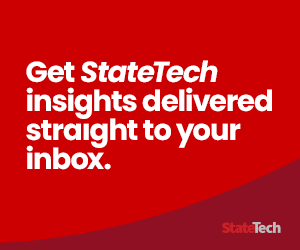Using RAG, agency IT leaders can train the models they’re using on agency data to generate more specific answers, and can have the models look for and then retrieve updated information so that answers are accurate.
For example, if a law or policy changed around taxes or permits, RAG would allow the model to ingest that new information and incorporate it into its answers.
What Is Retrieval-Augmented Generation, Anyway?
If not properly supervised and trained, a generative AI chatbot may attempt to “do something for you that it’s programmed to do, but it’s going to generate an answer that really doesn’t represent the answer that you want,” says Keith Briggs, head of enterprise architecture and innovation at the North Carolina Department of Information Technology (NCDIT).
RAG allows agencies to focus AI models on particular data when responding to queries, increasing the quality of responses. It does this by connecting the large language model an agency is using to external, verified sources of information.
Modern AI chatbots are trained on billions of parameters but are “not grounded in the knowledge that you want them to use,” adds Justin Vargas, rapid application development IT director at NCDIT.
One strategy for grounding models is fine-tuning them, Vargas notes, which essentially involves taking an existing model and embedding new information into it. By adding that new information, an IT team can compel the model to use it rather than the information it already knows, Vargas says.
PREPARE: IT infrastructure modernization can help agencies prepare for AI adoption.
However, there are limitations to such fine-tuning, as the information’s accuracy will still be tied to a static point in time. Fine-tuning is also a complex and time-consuming task, Vargas notes. It is an iterative process in which those managing the model must constantly check whether it is tuned properly.
In contrast, he says, RAG gathers data at the time that the question is being asked. The agency will send the AI model instructions that say, “forget everything, I want you to focus on this block of information that I’m providing you and here’s what I want you to do with that information,” Vargas says. That is the retrieval augmentation part of the process, in which the model is being tasked with retrieving updated information, for example, from a government website.
“And then you load that into the same prompts where you’re asking it a question, and then you let it go do its thing,” he says.
Benefits of RAG for State and Local Governments
There are numerous benefits state and local agencies can gain from using RAG, officials say, including improved accuracy in generative AI tools, which can increase the trust of citizens.
“We have a fundamental business problem in the state of Utah we’re trying to address with artificial intelligence,” says Utah CIO Alan Fuller. “We want to help our employees be more productive. At the same time, the currency of government is trust. So, whatever we do, we need to maintain a high level of trust.”
The Utah Tax Commission, the state’s internal revenue service, has 200 call center agents that answer residents’ tax questions. The state wanted to augment their capabilities with a generative AI assistant, Fuller says, and had a “bake off” with leading AI vendors to test their offerings. The models were grounded on a vast amount of information, including tax law, training materials for call center agents, transcripts of past calls and, using RAG, up-to-date state websites.














